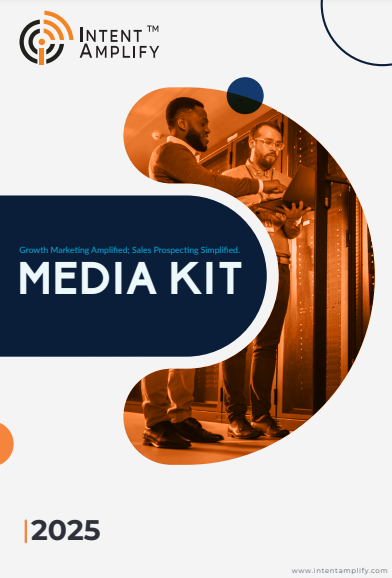
How to Use Non-English Keywords to Unlock Global B2B Opportunities
- Last updated on: June 20, 2025
Picture a German purchasing decision-maker seeking cloud-native CRM solutions. Would he search for “sales automation tools” on Google, or “Vertriebsautomatisierung”? And multiply that by all the non-English-speaking buyers in the world. That’s the untapped opportunity waiting in your marketing blind spot.
75% of non-native English speakers prefer to buy products in their native language, while 60% rarely or never purchase from English-only sites. For businesses scaling past borders, this is a strategy failure, not an oversight. Leverage non-English keywords to increase reach as well as instill trust, cultural salience, and more qualified conversions. This article will demonstrate how to do it correctly.
Begin with Market-Specific Search Intent, Not Direct Translation
The most prevalent error B2B marketers commit is directly translating their English keywords into another language. That approach presumes buying intent appears identical in markets, which it does not. For instance, “workflow automation” in the UK or US markets typically results in enterprise software research. In Japan, the local term might involve process-specific qualifiers such as “業務自動化 ソフトウェア,” indicating an affinity for vendor-specific use cases rather than broad categories.
To tap into actual B2B demand, begin by understanding what local buyers call their pain points. Apply tools such as Google Trends (geolocated to regions), Semrush multi-language keyword sets, or even in-market customer interviews. Monitor regional forums, partner platforms, or LinkedIn groups in native tongues.
What you’re creating isn’t a list of keywords—it’s an intent map specific to a market. By the time you know how B2B buyers search using their own words, you can create an SEO and ad campaign that speaks far past the confines of translation.
Non-English Keywords Should Be Integrated Into Your ABM and PPC Strategy
ABM (Account-Based Marketing) is only as strong as its relevance. And that comes with speaking the same language, not metaphorically but literally. If you’re targeting CIOs in Brazil, your LinkedIn Sponsored Content and Google Ads should reflect Portuguese intent signals. For example, instead of “best endpoint security software,” a local phrase like “melhor antivírus corporativo” may outperform it. Why? Because that’s what your buyers are searching.
Use non-English keywords in your actual PPC campaigns, retargeting display, and even landing page variations. Google Ads supports keyword-level geotargeting and ad copy customization. Use it to A/B test English vs native ads.
Inside your ABM platform, segment audiences not only by firmographics but also by language behavior. Tools like 6sense or Demandbase can assist in detecting intent signals in native languages, providing your team with a more accurate place to begin outreach and creative personalization. Executed well, this approach not only enhances click-through rates—it enables you to arrive where your competitors won’t.
Construct Multilingual Content Funnels That Mirror Local Buyer Journeys
Merely getting buyers onto your site is not sufficient; you need to take them through a funnel constructed in their language, according to their logic. A French B2B buyer might not anticipate the same sales rhythm or webinar style as an American buyer. By matching non-English keywords with locally oriented lead magnets such as whitepapers, case studies, or demo videos in indigenous formats, you build a funnel that reflects the buying culture of the region.
Localization must extend to copy translation. Consider:
- Currency and pricing models
- Compliance messaging (e.g., GDPR for EU purchasers)
- Industry-specific case studies with regional logos
- Time zone-tailored nurture flows
Even tiny adjustments, such as button text changes from “Request Demo” to “Demander une démo,” can increase engagement by a lot. Keep in mind: language indicates trust. When your content is written in your buyer’s language and aligns with their norms of decision-making, you don’t simply drive more leads. You build credibility.
Analyze International Keyword Performance with Multi-Language SEO Tools
Once your non-English keywords are deployed, your job isn’t done. It’s time to analyze what’s working, where, and why. Use SEO platforms that support multi-language keyword tracking, like Ahrefs, Moz Pro, or Semrush. Set up keyword rank tracking by region and language to see how your terms perform against local competitors.
But don’t stop at rank. Track:
- CTR differences by language
- Conversion rates on localized pages compared to English pages
- Bounce rates by region and stage in the funnel
These metrics enable you to optimize your strategy, spot lagging terms, and discover rising ones. You can also construct keyword clusters by intent stage (awareness, consideration, decision) and sort them by language. That method enables you to view if top-of-funnel terms in Spanish perform better than decision-stage terms in English for particular markets. After some time, your non-English keyword strategy turns into a multilingual intent engine, optimized for global B2B engagement.
B2B Growth Resides in the Language Layer
Non-English keywords are not merely a technical SEO hack; they are a window into how international buyers think, search, and make decisions. Whether you’re growing APAC, EMEA, or LATAM, native language intent data provides a strategic advantage. The winners in 2025 will be the brands that finally cease assuming buyers think in English and begin appearing in their language.
IntentAmplify™ assists B2B marketers in discovering these multilingual opportunities using accurate intent signals, international audience segmentation, and campaign technology suitable for today’s borderless buying process.
FAQs
1. Why are non-English keywords significant in B2B marketing?
Non-English keywords enable B2B marketers to capture non-English-speaking region demand in which buyers research the product in their language. They facilitate the discovery of hidden intent, local relevance, and substantial engagement in international markets that might otherwise remain untapped.
2. How do I discover appropriate non-English keywords for my business?
Begin by exploring how consumers in your target audience define their pain points, using resources such as Google Trends, Semrush, and local search engines. You can also examine competition content, do native-language interviews, or collaborate with local SEO specialists to create keyword collections that truly represent local intent rather than translations.
3. Can I use non-English keywords in English content?
Although possible, it’s not advisable. For optimal impact, non-English keywords must be accompanied by completely localized content. This enhances search visibility and establishes trust with local audiences. Employ native-language landing pages, ads, and CTAs to complement your multilingual strategy optimally.
4. What is the difference between translation and localization in keyword marketing?
Translation moves words straight from one language into another. Localization modifies the copy, including keywords, to fit the culture, buyer behavior, and decision-making habits of the target country. Successful B2B marketing tactics place greater importance on localization to represent how actual buyers shop and interact.
5. How do I measure the performance of non-English keywords in international campaigns?
Employ SEO and analytics tools that facilitate regional tracking, like Semrush, Ahrefs, or Google Search Console. Track keyword rankings by language and country, as well as reports such as bounce rate, time on page, and conversions on translated assets. The data enables multilingual campaigns to be optimized based on actual buyer behavior.




